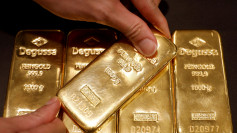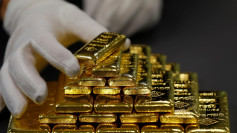Gold prices surged to record highs on Thursday, driven by a combination of geopolitical unrest and uncertainty surrounding the upcoming U.S. presidential election. Investors flocked to the safe-haven asset as concerns about the Middle East conflict and a potentially volatile election season in the U.S. intensified. Additionally, ongoing monetary policy easing by central banks further supported gold's rise, pushing the precious metal beyond the $2,700 per ounce mark.
Spot gold increased by 0.7%, reaching $2,690.60 per ounce by 1:42 p.m. ET, while U.S. gold futures settled 0.6% higher at $2,707.5. Year-to-date, gold has seen a staggering 30% rise, outpacing the S&P 500's 22% gain, making it one of the best-performing assets in 2024.
"Gold often becomes the go-to asset in times of uncertainty," said Nitesh Shah, a commodity strategist at WisdomTree. "On top of the concerns in the Middle East, the U.S. election is looking increasingly contested, generating a host of uncertainties." This uncertainty has spurred investors to seek refuge in gold, which tends to perform well during periods of geopolitical and economic volatility.
The recent rally comes on the heels of the Federal Reserve's decision to cut interest rates by half a percentage point last month. As a non-yield-bearing asset, gold benefits from lower interest rates, which reduce the opportunity cost of holding the metal. Market expectations of further rate cuts have only added to gold's allure.
According to a prediction from delegates at the London Bullion Market Association's annual gathering, gold prices are expected to rise to $2,941 per troy ounce over the next 12 months. Saxo Bank's head of commodity strategy, Ole Hansen, remarked, "The potential for gold to rally near $3,000 in the next year is attracting attention, especially as the global economic outlook remains uncertain."
The rise in gold prices was briefly tempered by U.S. economic data released earlier in the day. Reports showed that retail sales in September grew slightly more than expected, and unemployment unexpectedly fell last week. These indicators suggest a resilient U.S. economy, which could influence future monetary policy decisions. "Those two reports fall into the camp of the monetary policy hawks," noted Jim Wyckoff, senior market analyst at Kitco Metals. However, despite this, gold maintained its upward trajectory.
Central banks have been major players in the gold market, with record-high purchases in recent years as they seek to diversify reserves amid global uncertainties. The Federal Reserve's shift toward a more accommodative monetary stance, combined with similar moves by other central banks such as the European Central Bank (ECB), has provided strong support for gold's continued rise. The ECB cut interest rates for the third time this year, further lowering borrowing costs across Europe and adding to the favorable environment for gold.
"Demand from private investors in the U.S. remains strong, but central banks have been the driving force behind gold's surge," said Alex Ebkarian, COO and co-founder of Allegiance Gold. Goldman Sachs analysts also pointed out that gold-backed exchange-traded funds (ETFs) have seen increased investments, though the full impact of these moves has yet to be fully reflected in the market. The firm recently raised its price target for gold from $2,700 to $2,900 per troy ounce for early 2025, citing expectations of faster declines in short-term interest rates in both Western nations and China.
While gold prices are soaring, other precious metals have seen mixed performances. Spot silver fell by 0.3%, settling at $31.56 per ounce, while platinum rose by 0.1% to $994.00. Palladium, often used in industrial applications, gained 1.7%, reaching $1,041.
The combination of geopolitical risk, economic uncertainty, and central bank activity has created a perfect storm for gold's remarkable rise in 2024. The Middle East conflict, particularly the ongoing war between Israel and Hamas, has added a layer of volatility to global markets, pushing investors toward assets like gold that are seen as safer in turbulent times.






